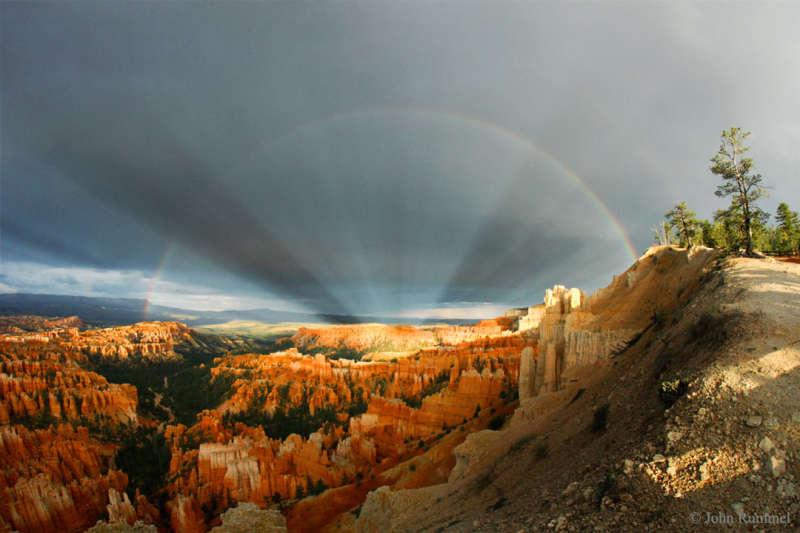Credit & Copyright: John Rummel
Explanation:
What's happening over Bryce Canyon?
Two different optical effects that were captured in
one image taken earlier this month.
Both effects needed to have the Sun situated directly behind the photographer.
The nearest apparition was the common
rainbow,
created by sunlight streaming from the setting sun over the head of the photographer,
and scattering from raindrops in front of the canyon.
If you look closely, even a
second rainbow appears above the first.
More rare, and perhaps more striking, are the rays of light that emanate out from
the horizon above the canyon.
These are known as anticrepuscular
rays
and result from sunlight streaming though breaks in the clouds, around the sky, and
converging at the point 180 degrees around from the Sun.
Geometrically, this
antisolar point
must coincide with the exact center of the rainbows.
Located in Utah, USA,
Bryce Canyon itself
contains a
picturesque array of ancient
sedimentary rock spires known as
hoodoos.
APOD Editor to Speak: Saturday, August 8 at
Keweenaw Science & Engineering
Festival
1999 2000 2001 2002 2003 2004 2005 2006 2007 2008 2009 2010 2011 2012 2013 2014 2015 2016 2017 2018 2019 2020 2021 2022 2023 2024 2025 |
Yanvar' Fevral' Mart Aprel' Mai Iyun' Iyul' Avgust Sentyabr' Oktyabr' Noyabr' Dekabr' |
NASA Web Site Statements, Warnings, and Disclaimers
NASA Official: Jay Norris. Specific rights apply.
A service of: LHEA at NASA / GSFC
& Michigan Tech. U.
|
Publikacii s klyuchevymi slovami:
anticrepuscular rays - raduga - atmosfernye yavleniya
Publikacii so slovami: anticrepuscular rays - raduga - atmosfernye yavleniya | |
Sm. takzhe:
Vse publikacii na tu zhe temu >> | |
